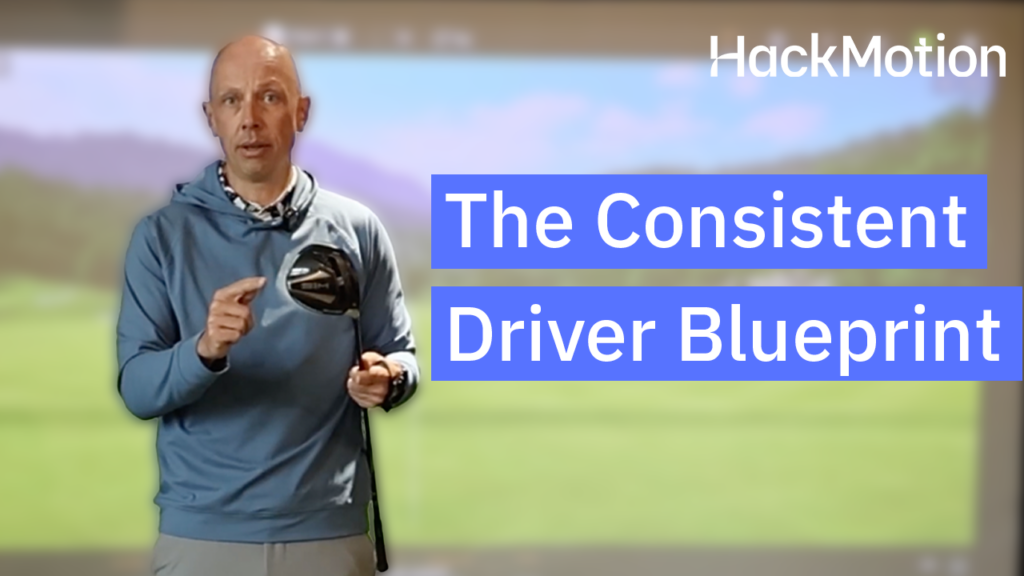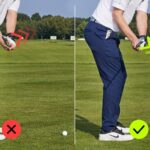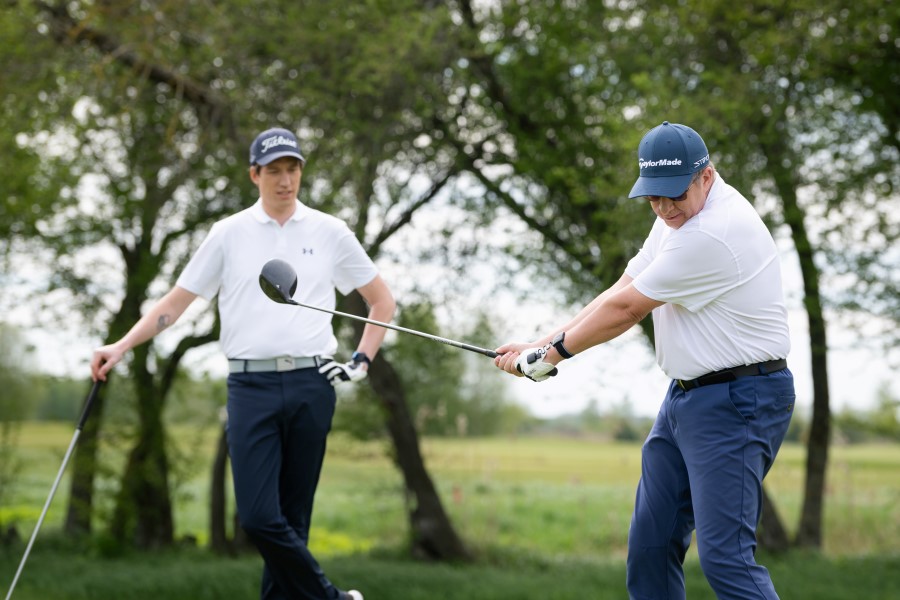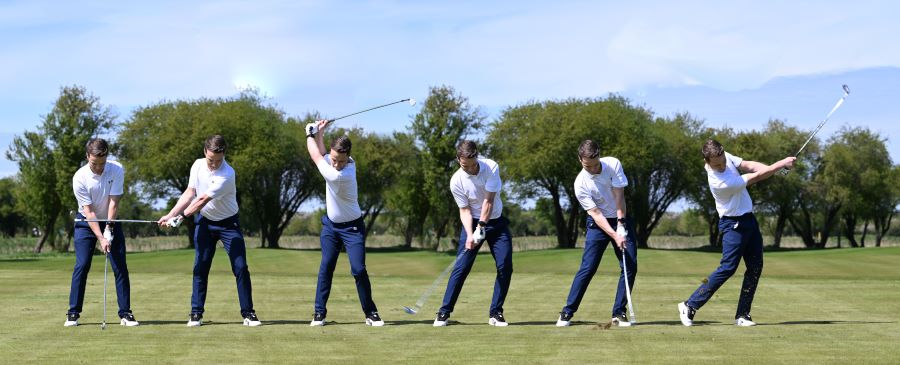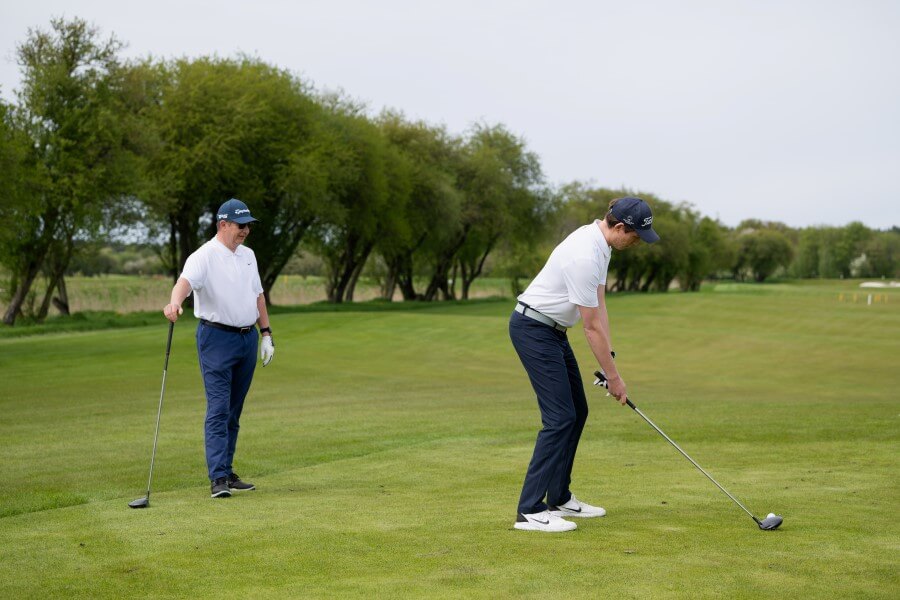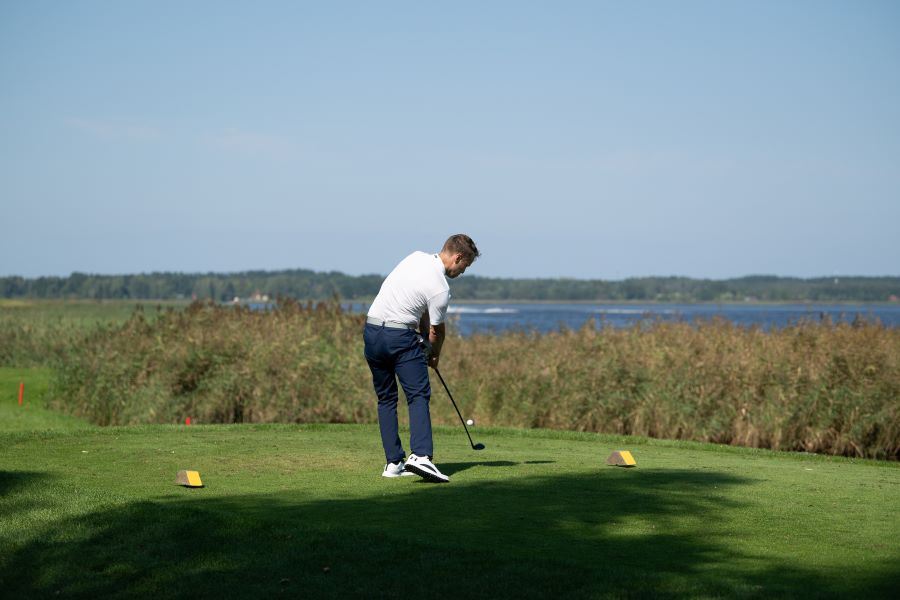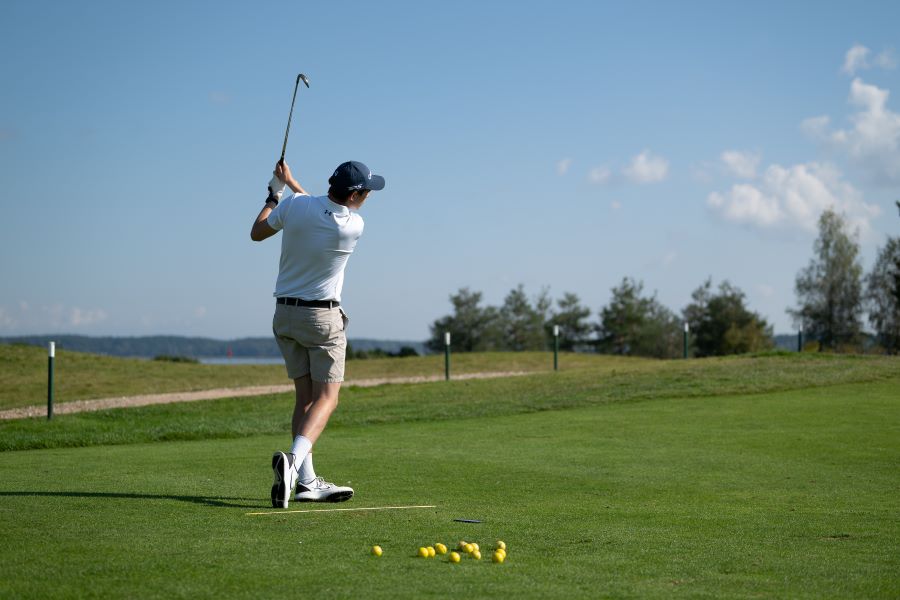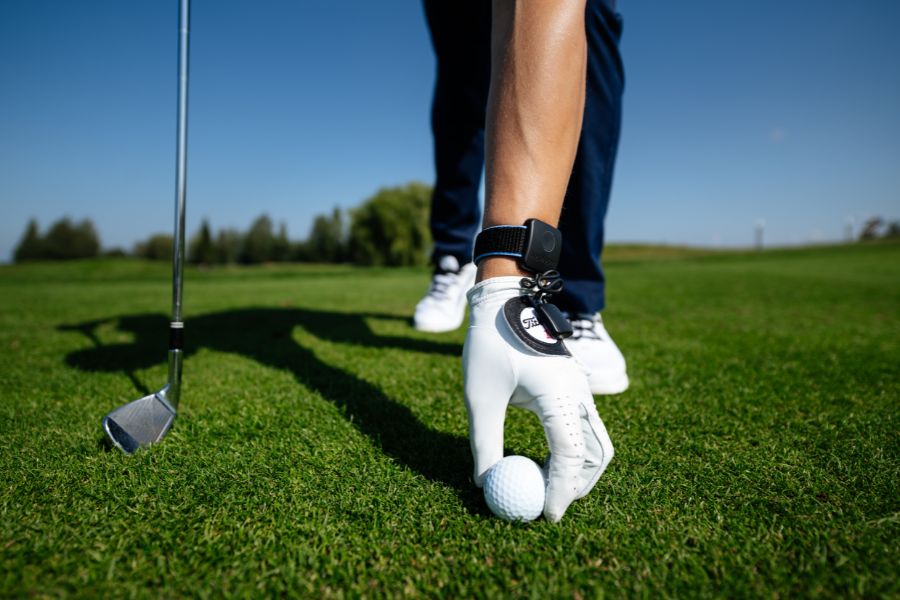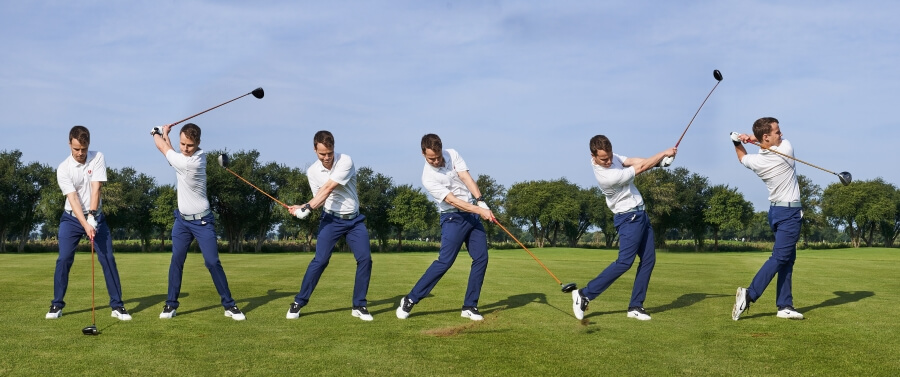Hitting Driver Too High (Why It Happens and How to Fix It)
I know golfers hate the slice and it’s hard to really say the slice isn’t the most frustrating shot in the game.
However, when you step up to the tee box and pop a drive up or hit it 100 yards straight up into the air, it’s pretty defeating.
If you know this is an issue in your game and you are ready to get it fixed, you are in the right place.
Hitting the driver too high is a common mistake. I’ll walk you through how to fix it, how to improve your ball flight and maximize your total distance off the tee.
Stop Hitting Your Driver Too High (Key Takeaways)
If you don’t have time to read our entire guide on how to fix your driver, here are the key takeaways to make this a quick fix.
- Your ball position and grip need to be correct; ball position off the lead heel and the grip should be slightly strong.
- If the lead wrist is too extended, you will hit more of a pop-up type drive instead of a more penetrating flight; check the wrist position at the top with HackMotion.
- A flatter golf swing can make it easier to hit the driver lower, see if your swing is too steep.
- Keep your head behind the golf ball at impact; shoulders that are overactive could send the club in at the incorrect angle.
Straight, consistent drives are just 3 drills away! Discover practical drills to improve your driver distance and consistency – click here to explore.
Contents
Why Do I Hit My Driver Too High?
Although it’s good for your driver to launch high, there is certainly an ideal peak height. If you miss this peak height, you’ll lose distance, which will make it harder to score.
The most common reasons for hitting a driver too high include:
- Incorrect tee height.
- Steep angle of attack.
- Using a driver with too much loft.
- Improper ball position.
- Lead wrist too extended at impact.
How to Fix Hitting a Driver Too High
If you are hitting a driver too high, these are the ways to fix it. Go through this list in the order it is presented; we will start with some of the most basic issues and then get to the more complicated fixes.
1. Get the Tee Height Set Correctly
If your driver is teed too high you can hit it with the top part of the clubface and pop it up into the air. The ideal tee height is slightly different from one player to another because of angle of attack, style of your driver, etc.
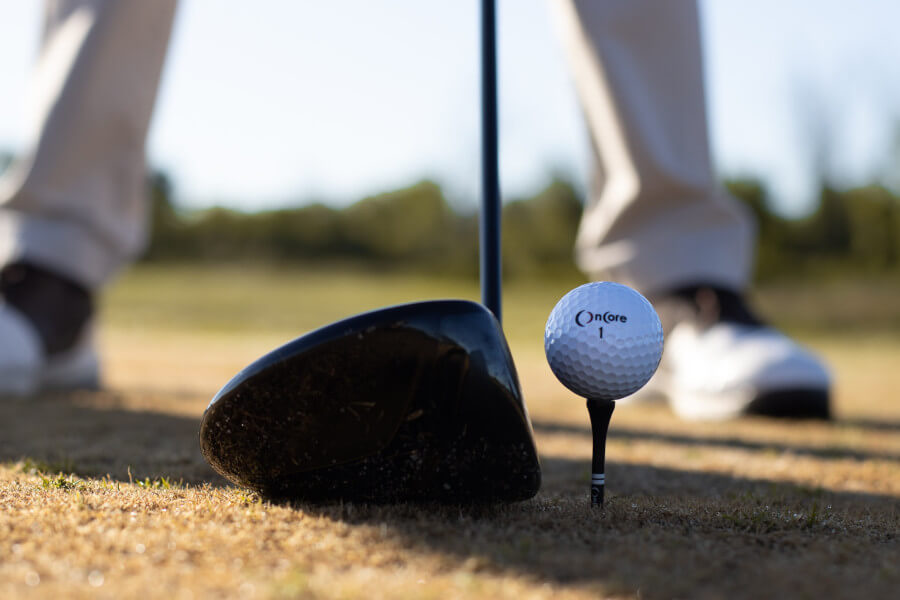
Most of the time having about half the ball over the top of the driver when you set up is a good spot to start.
To fix this, set yourself up to hit three different drives: one with a low tee, one with a medium height, and one in that position. I started with half of the ball above the top of the clubface.
See which one helps you get the best combination of loft, control, and distance.
2. Check Your Driver Loft
Most golf drivers have an adjustable loft. Check your settings and see if they are suitable for your swing speed.
The faster you swing the driver, the lower the loft on the club can go.
With a slow swing speed, use the extra loft to gain more distance, but if you hit it too high, simply adjust your club a bit.
| Swing Speed (mph) | Recommended Driver Loft (degrees) |
|---|---|
| Under 85 | 14-16 |
| 85-95 | 12-14 |
| 95-105 | 10-12 |
| 105-115 | 8-10 |
| Over 115 | Less than 8 |
3. Flatten the Swing Plane
A swing plane that is too steep will cause you to hit the driver high.
To flatten your swing plane, you should consider taking the club more shallow on the backswing and having it approach more shallow on the downswing.
When you have the visual of what this looks like and the feeling of what it should feel like, it’s easier to get aggressive.
One of the best ways to flatten the swing plane is to find a lie where the ball is above your feet. As you practice from this lie keep the golf club moving more around you.
Choking up a bit and practicing from a lie like this really creates a more shallow swing.
4. Get the Ball Position Right
The driver should be played off of the inside of your lead heel. If you get the ball up too far you can very easily pop it up.
Many times, we see this happen because golfers take a wider stance and lose that perspective of where the golf ball should be placed in the stance.
With the ball too far forward, you’ll hit your driver too much on the upswing, and it pops straight up.
Align the ball with the inside of your front heel to account for the added length of your driver shaft.
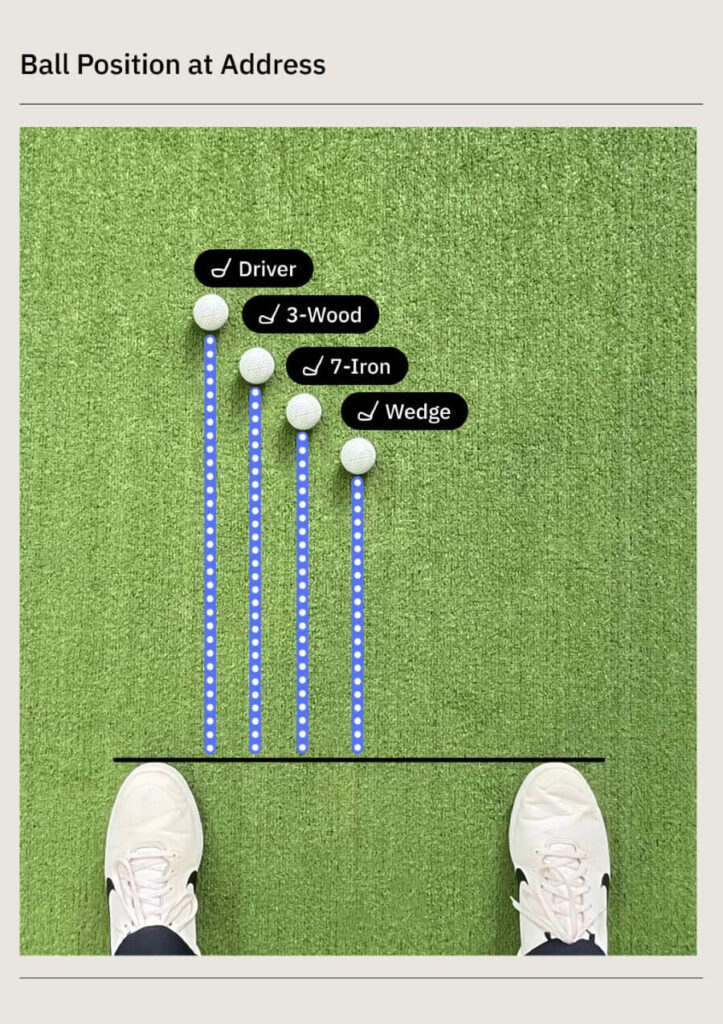
To fix this, put some alignment sticks down on the ground. You can make a lowercase T shape with the sticks and position one just on the inside of your heel to make sure the golf ball is positioned where it should be.
5. Fix the Extension in Your Lead Wrist
After studying more than 1,000,000 golf swings, we have found that the most common wrist error that golfers make in their swing is a wrist position that is too extended.
To fix this, your lead wrist should be flat or slightly flexed at the top of your backswing.
If you can get to this position, the clubface will be square, and you’ll have much less work to do through impact.
But most importantly, your clubface will not be open and your angle of attack will not be as steep.
Using HackMotion to measure your wrist angles is the quickest way to fix this issue. However, there is a simple drill you can do with a table tennis paddle, as seen in this video.
6. Strengthen Your Grip
Finally, one last piece of the puzzle is to check the strength of your golf grip. A golf grip that is too weak causes the ball to pop straight up in the air, which can become a problem at impact.
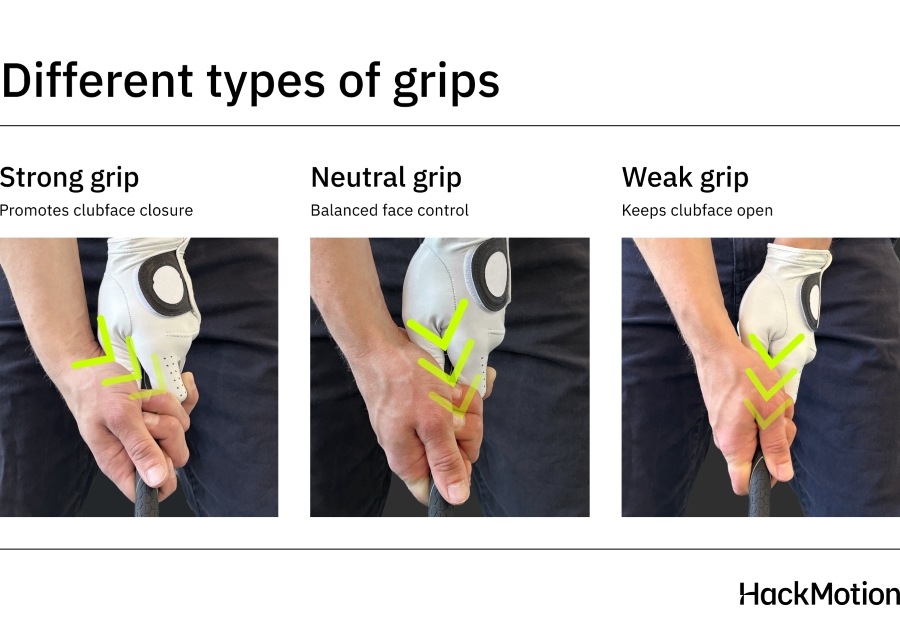
To strengthen your grip, turn your left hand (right-handed golfer) more to the right, and your trail hand will naturally fit more underneath the club.
This stronger grip can help you release the clubface a little better and lower that launch angle.
Additional Drills to Stop Hitting the Driver Too High
If you are making progress but want a few extra ways to keep that driver ball flight down, here are a few more of our favorite drills.
Slow Down the Upper Body
This drill from Rick Shiels will show you how to fire your lower body through impact but keep the shoulders held back just a bit. You won’t come into the ball quite as steep, and your clubface should also be square.
The mindset is simple: just let the lower body lead and keep the shoulders just slightly behind.
Squeeze the Flight Down
If you really want to take the ball flight down and hit more of a windcheater-type drive, this is the way to do it.
You’ll have to tee it down, move it back, and then stay a little more compact or squeeze through the ball.
Your extension and width of the swing won’t be the same, but you can use this for a dependable golf drive.
Keep the Head Back Drill
This video from Paul Wilson Golf gives you some great ideas for keeping the head behind the ball and approaching the drive from a more shallow position.
One way to practice this is to take some swings at waist-high and really focus on where your head stays at impact.
Is There an Ideal Peak Height For a Drive?
If you are lucky enough to have a launch monitor to work with, one of the key stats to look for is the peak height for your drive. The faster your swing speed, the higher you can launch the ball while still getting good distance.
Here are some general numbers to strive for:
- Fastest Swing Speeds (Professionals): 100 to 120 feet
- Fast, up to 105 MPH: 85 to 100 feet
- Average Swing Speed – up to 95 mph: 70-85 feet
- Slow swing speeds – less than 85 mph: 55-70 feet
Final Thoughts
At this point, you have all the information you need to get your driver ball flight lowered and start hitting more penetrating drives.
One last tip is to make sure you are playing with a golf ball that does not cause you to generate too much spin. Some high spin golf balls create a higher ball flight even if you are striking the ball well.
Start to use HackMotion as you practice to identify issues in your grip and your lead wrist position through the golf swing.

